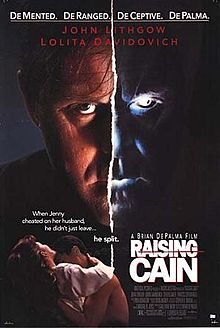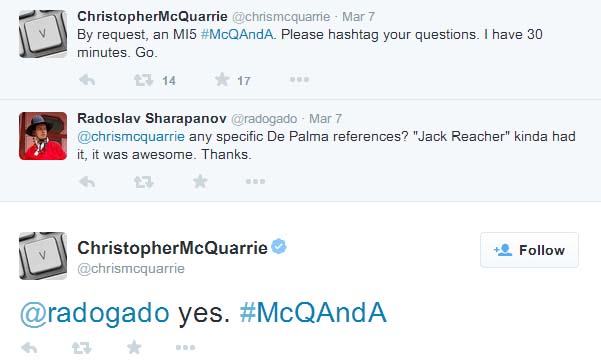AVC: There’s a lot of vintage John Carpenter in this film, especially in the music and the use of space. Was he a big influence, and were there other filmmakers whose work you studied when bringing the movie to life? DRM: Of course, I totally love Carpenter—Halloween, and his version of The Thing is a favorite of mine. I’ve definitely watched his movies a million times. I’m a fan of his blocking and his staging and his compositions. For me, it wasn’t just about saying, “This particular shot is a Carpenter homage.” I’ve watched his stuff enough that’s probably going to come out in the filmmaking. But there’s a ton of other filmmakers that factored in, too. I also love Cronenberg, I’m a big De Palma fan—I think there’s probably a lot of De Palma in there as well. Hitchcock, too. Rear Window is my favorite movie of all time. I love Creature From The Black Lagoon. I could go on and on about all the people that I love. And then there are other elements of the movie that are not necessarily the horror elements. Some of the inspiration for that comes from a lot of different places, few of them having anything to do with horror.
AVC: Do you have rules about how you write teenage characters? One of the interesting things about It Follows is that it features kids who don’t talk in references or relate everything to something they’ve seen.
DRM: Yeah, there’s an avoidance of certain aspects of pop culture, but then I like to embrace other parts of it. It’s tricky, because I’ve only made these two films, but I have a million different scripts and a million different things that I want to make. The two that I’ve done have just been about teenagers, but I have stories about many different characters at many different stages of life.
It more has to do with my general belief that film doesn’t have to operate within the world we live in. The ground rules of the film world don’t have to be how we understand the world. And something doesn’t have to be fantasy to take some elements from fantasy. Movies are very much dreams, in a way, and you can use that to your advantage.
AVC: The time period of the movie is fascinatingly indeterminate. One of the girls has this mobile device, but otherwise we could be watching a movie set in 1990.
DRM: There are production design elements from the ’50s on up to modern day. A lot of it is from the ’70s and ’80s. That e-reader cell phone—or “shell phone”—you’re talking about is not a real device. It’s a ’60s shell compact that we turned into a cell phone e-reader. So I wanted modern things, but if you show a specific smartphone now, it dates it. It’s too real for the movie. It would bother me anyway. So we made one up. And all of that is really just to create the effect of a dream—to place it outside of time, and to make people wonder about where they are. Those are things that I think happen to us when we have a dream.
AVC: Plenty of people have read the “It” of It Follows as a metaphor for a sexually transmitted disease, but that doesn’t entirely scan, as you can’t get rid of an STD by sleeping with someone else.
DRM: [Laughs.] Right, exactly. I was totally aware of that connection when I wrote the script, but it wasn’t necessarily the driving force in terms of subtext. There are a lot of other aspects. I tend to shy away from explaining it, but I’m happy to have the conversation.
AVC: Of course, you don’t need to unpack your own film. That’s for us to do.
DRM: [Laughs.] But I would agree with you that even if you read it that way, it’s much more complicated than that.
AVC: You mentioned Brian De Palma earlier. He’s a director who builds his film around set pieces, and I feel as though the scary moments in It Follows are essentially set pieces, too. Did you write all of them into the script or were there any moments born when you were on location?
DRM: Oh, no, it’s all in the script. There are small elements that we worked out on set. But we didn’t have a ton of money, so it was about having a really solid plan and going in and doing everything in our power to get it done. There was very little time to change things once we got going.
So I worked those [set pieces] out in my head beforehand. Most of that stuff was probably in the first draft of the script. A few things changed. Some set pieces became smaller because of budget. There were a couple of really cool ideas from the first draft that would have been really fun to do, but we would have just needed a lot more money and people. I had a lot of ideas of ways you could use the rules of this monster to generate suspense and create some really interesting set pieces. And I only got to do a few of them in the film, really.





 At
At 
 The March 2015 issue of
The March 2015 issue of 


